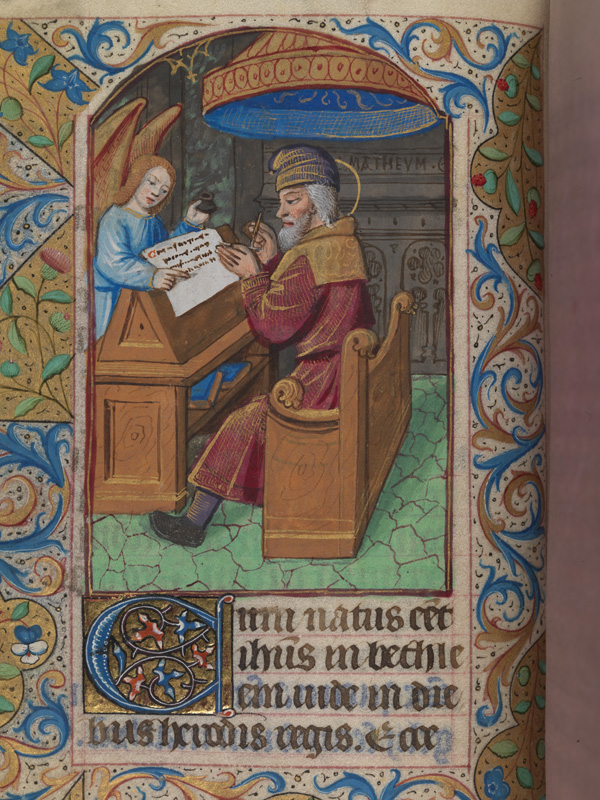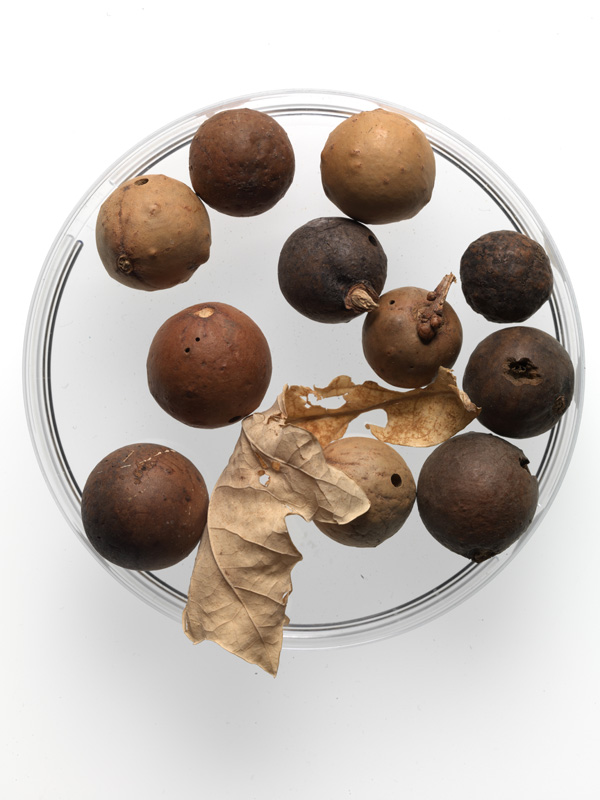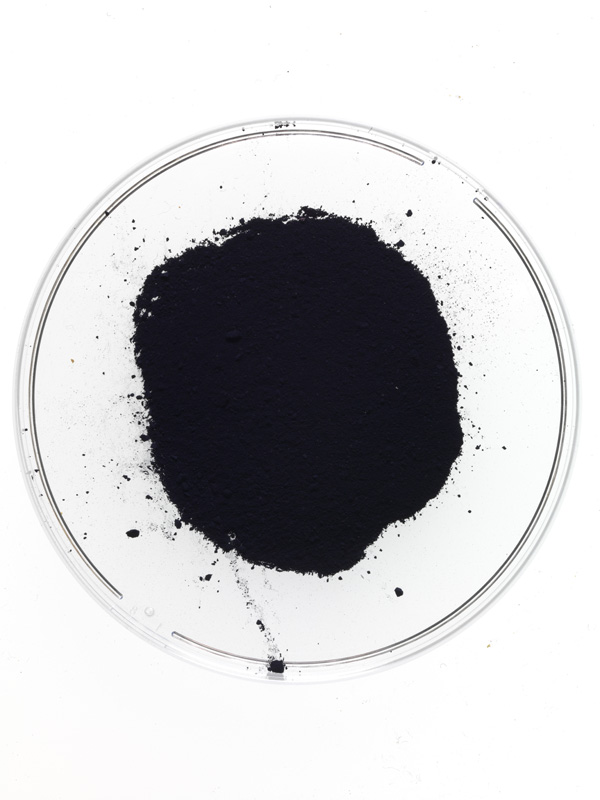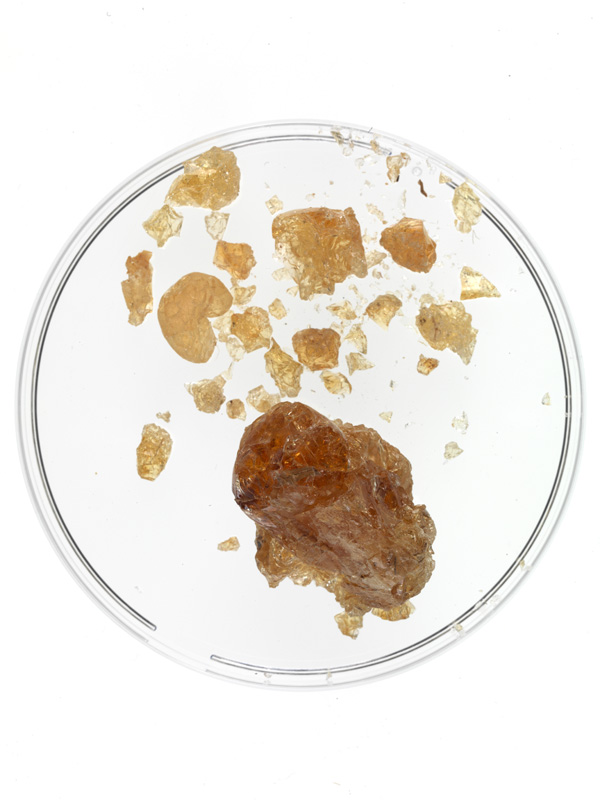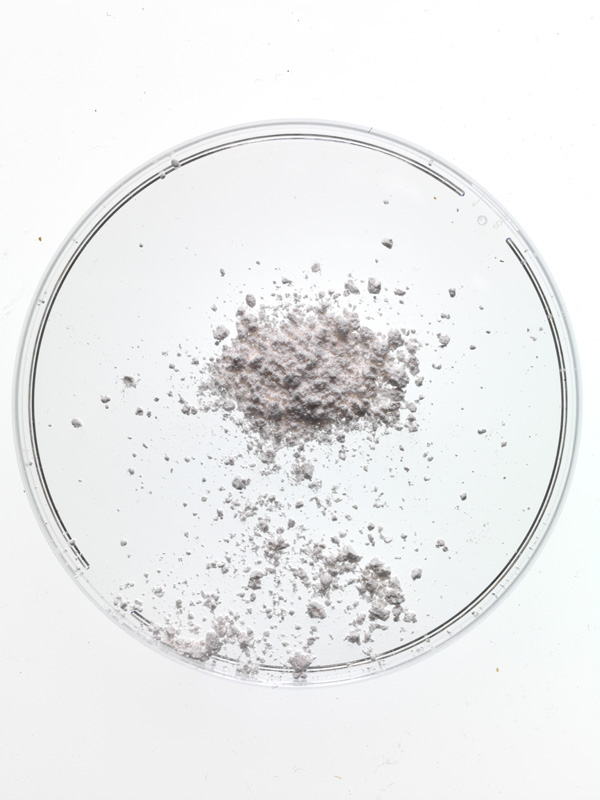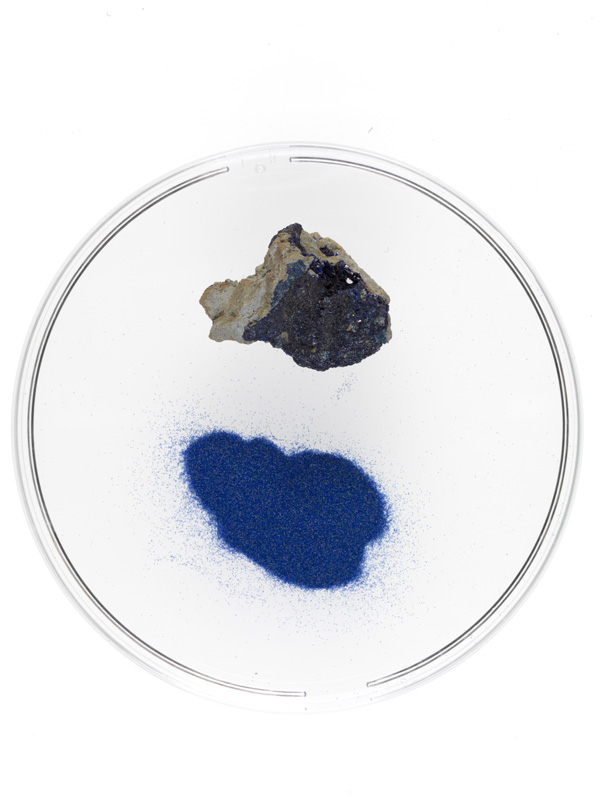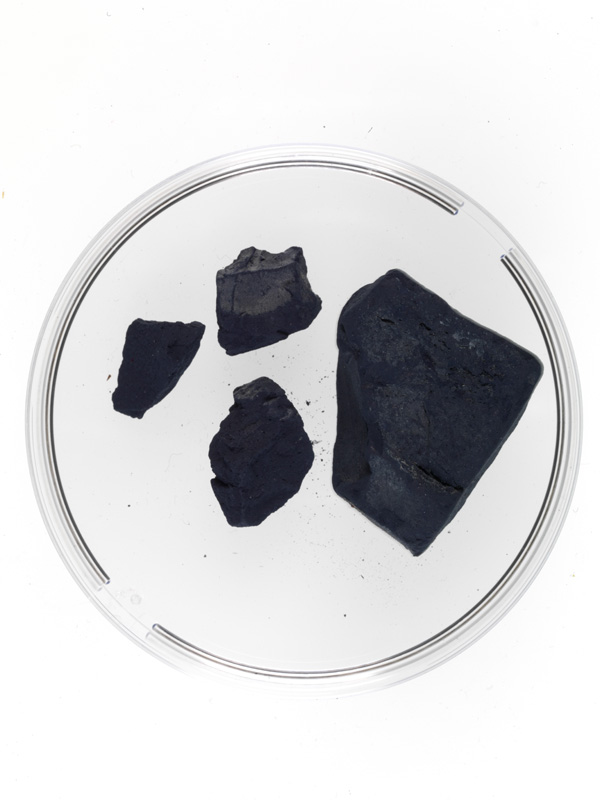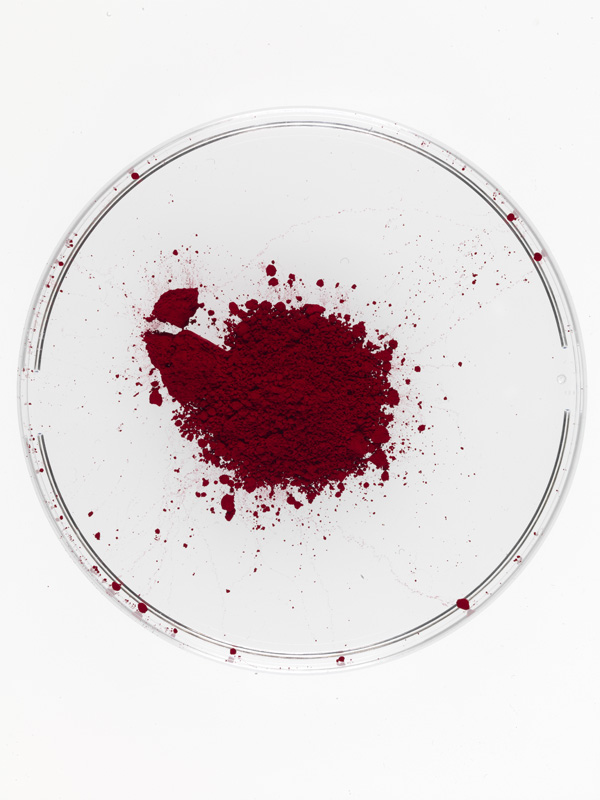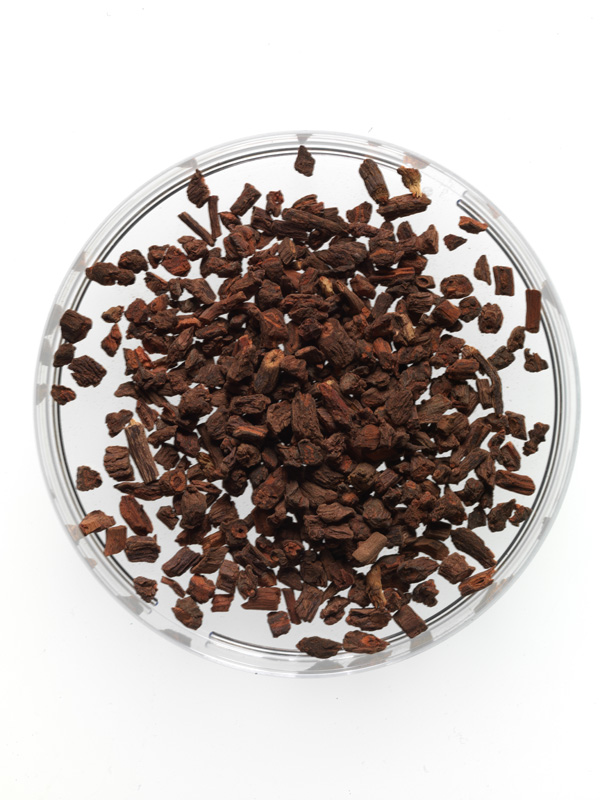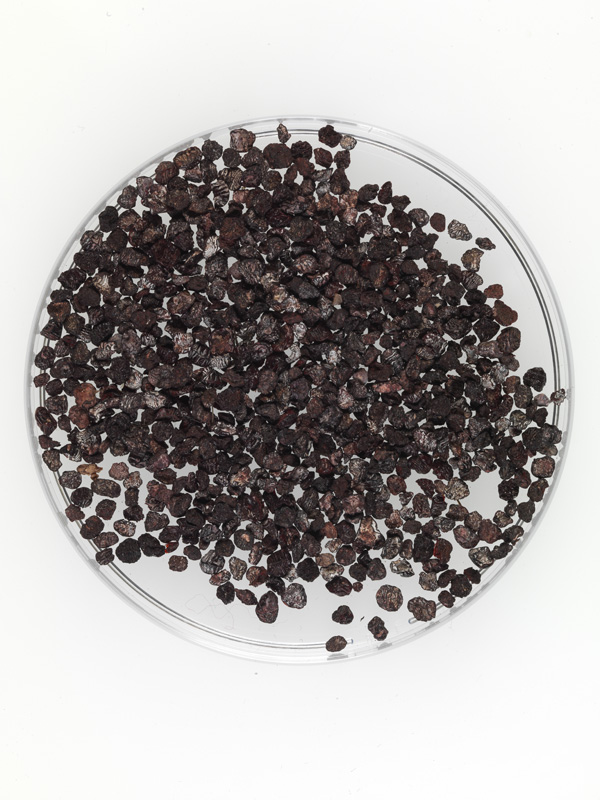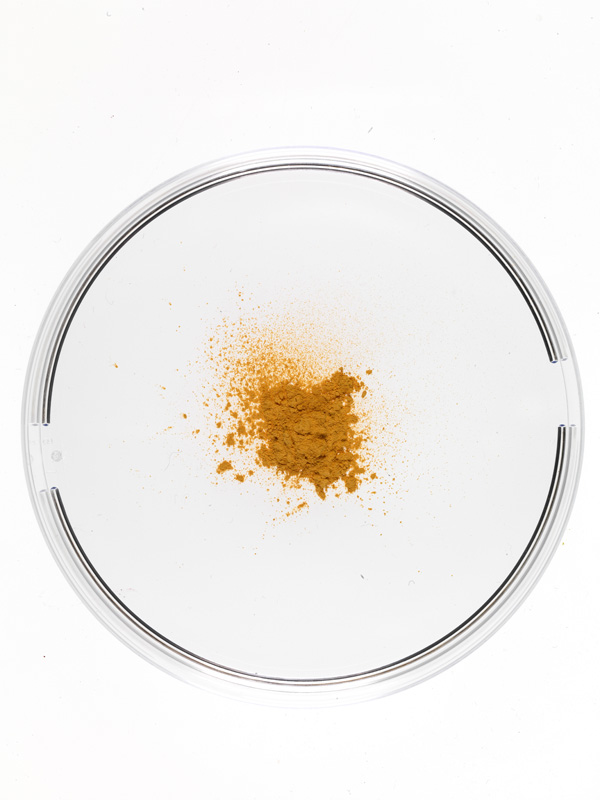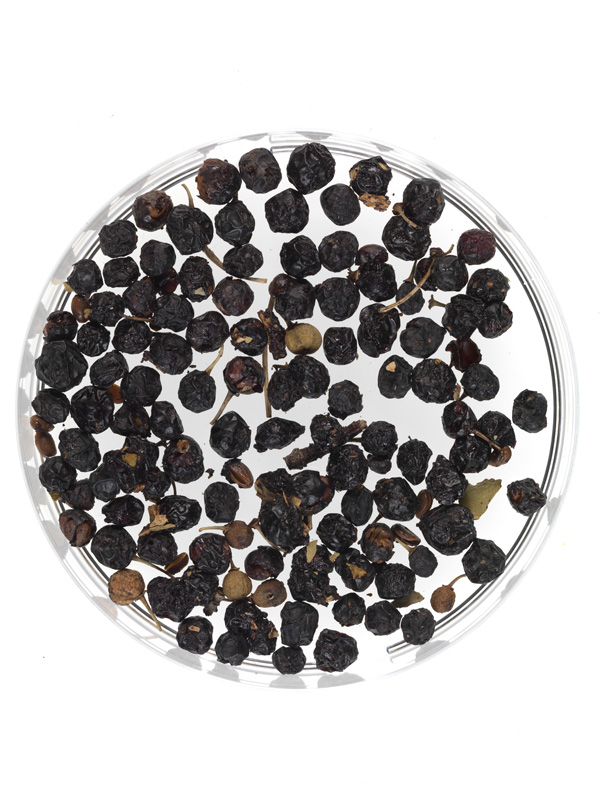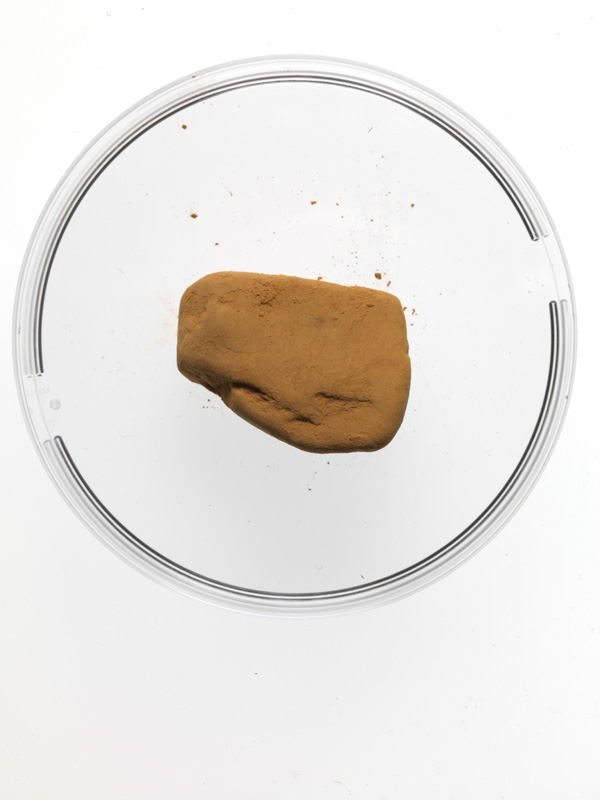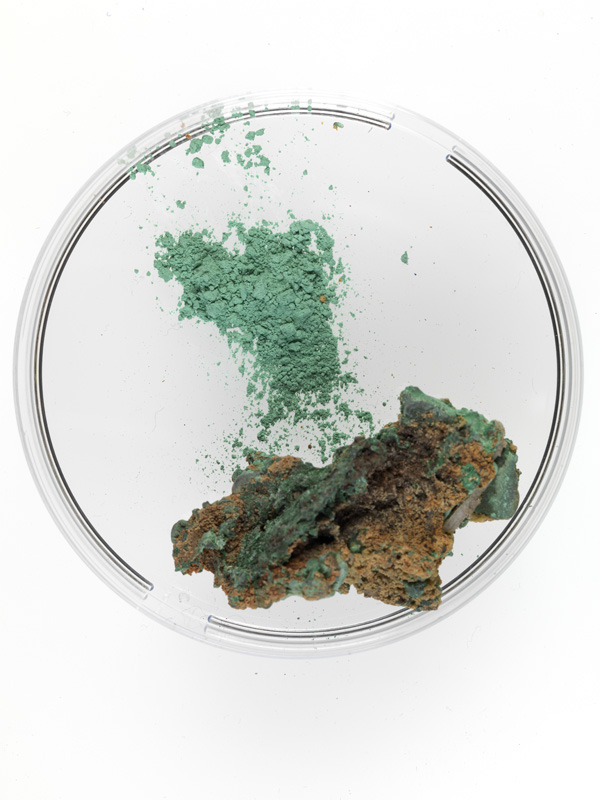What colour is that?
Pigments and inks are created from coloured materials extracted from a wide range of sources. These include powdered particles from clays and minerals, and dyes extracted from lichens, barks, berries, and insects. They can also be chemically manufactured from a combination of materials, such as oak galls and ferrous sulphate, which together make iron gall ink - a common ink in early manuscripts.
The identification of pigments adds to our knowledge of the materials and techniques used by artists and scribes. It also informs our treatment decisions, and helps us determine the condition of items. As some pigments age they can change colour, lose adhesion, or damage the materials to which they are applied. These effects can often be detected using simple methods of observation and optical microscopy.
For more detailed analysis, non-damaging lasers and x-rays are used for our investigations. Recent work using these techniques on the Book of Kells and the Book of Durrow has confirmed the principal pigments used during the early-medieval period of Irish art.
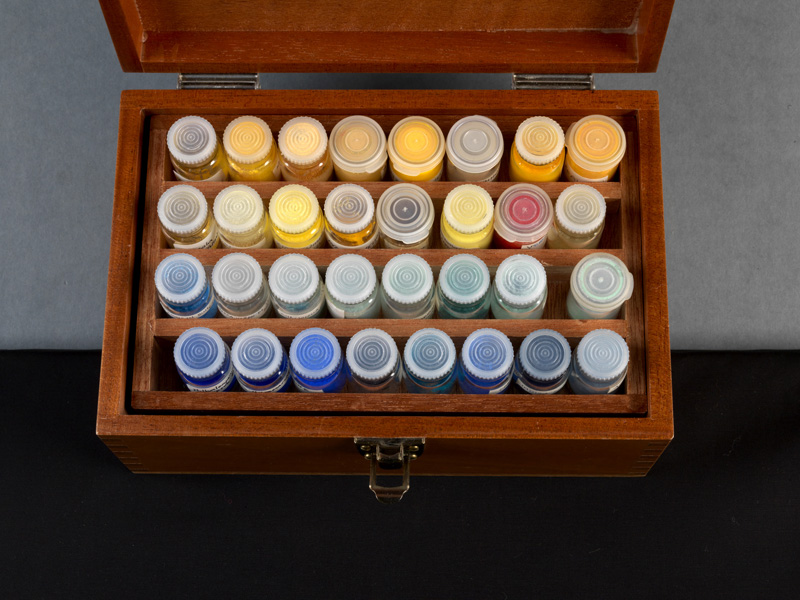
Book of Hours
France, mid-15th century
This opening shows the Evangelist Matthew writing his Gospel. He holds a knife, to erase mistakes, and his writing pen. A winged figure holds out his ink pot. Analysis using x-ray fluorescence has confirmed the use of lead white, azurite, and vermilion in the design.
MS102, folio 35v
Iron gall ink
Oak galls, ferrous sulphate and ink
This ink is created by the reaction of iron salts with the gallotannic acid extracted from plant galls. This is the principal ink on the Book of Kells.
Lamp black
A fine particle carbon deposit created from burning oils, rosin, or pitch. Carbon black ink was found on an area of design on the Book of Kells.
Acacia gum
Inks and pigments are bound to their support by sticky substances such as gums and glues. Gum Arabic is the hardened sap of the acacia tree.
Gypsum: mineral specimen and pigment
A calcium sulphate mineral, CaSO₄. This was found to be the white on the Book of Kells.
Azurite: mineral specimen and pigment
Hydrated copper carbonate: Cu(CO)(OH)₂.
This blue has been used on the Book of Hours.
Indigo: lump pigment and pigment
Indigoindigotin: C₁₆H₁₀N₂O₂. Derived from leaves of the indigofera species, this is the blue on the Book of Kells and the Book of Armagh.
Red ochre: pigment
The principal colouring matter is the naturally occurring iron (III) oxide hermatite, Fe₂O₃.
This was commonly used as a base for gold-leaf.
Madder: roots and pigment
The dye is from the roots of various members of the Rubiaceae family, and is fixed onto a white base to make an opaque paint.
Carmine: Cochineal beetles and pigment
An insect-based red lake, from cochineal or kermes beetles. Carminic acid is the principal dyestuff.
Orpiment: Mineral specimen and pigment
A poisonous arsenic sulphide pigment: As₂S₃.
This is the yellow on the Book of Kells, the Book of Durrow, and the Book of Armagh.
Buckthorn: Berries and pigment
From the Rhamnus and Frangula species. The unripe berries produce a yellow and the ripe berries a green flavonoid dyestuff. The green is typically called 'sap green'.
Yellow Ochre: lump and pigment
Naturally occurring earth pigment, the principal colouring matter is the iron oxide hydroxide goethite, although many other minerals may be present.

